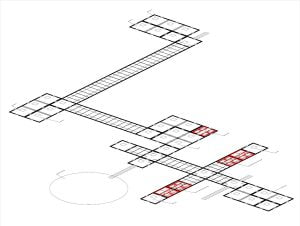Moon Camp Pioneers Gallery 2020-2021
In Moon Camp Pioneers each team’s mission is to 3D design a complete Moon Camp using Fusion 360. They also have to explain how they will use local resources, protect astronauts from the dangerous of space and describe the living and working facilities.
Team: White holes
Liceo Scientifico Statale Enrico Fermi Sciacca Italy 16
External viewer for 3d project
|
Project description
Our project is called B-612 because it was named after the asteroid where the Little Prince of the homonymous novel lives together with his rose. And it’s exactly thanks to this rose, trapped into a glass bell, that represents astronauts, since the flower lives thanks to the protection this glass gives to it, just like astronauts who need a moon camp to live in. Also, in the book the main character travels very often through the space, but he always comes back home, where the rose is waiting for him. This is a metaphor that shows what cosmonauts do: they are always searching and discovering new features to bring better quality life on the Earth. |
|||
|
Where do you want to build your Moon Camp?
The crater Clavius, located in the rugged southern highlands of the Moon, is, according to us, the best place to build our Moon Camp, and there are various reasons why. First of all, there are many scientific discoveries that prove lots of ice, Oxygen,Iron and Silicone. Not to mention the position of the crater, since it’s brightened from the Sun and it’s on the closest surface to our planet, so there would be an easier route and a better communication with the base on Earth. Nevertheless, the usual temperature is from -50°C to 0°C, which is a lovely clime, considering the normal temperature of any other part of the Moon. How do you plan to build your Moon Camp? Describe the techniques and materials you would use.
As regards materials, we’ll use regolith, lunar dust that can be found on the surface of the satellite and, together with the regolith , astronauts’ urine to form cement .By using the 3D printer,we’ll create the base. The environment on the Moon is very dangerous for the astronauts. Explain how your Moon Camp will protect them.
We are well aware of the risk astronauts are running into, and that’s why we thought about building the structure with very thick walls, so that they can give a massive protection. The material we are going to utilize is the regolith, which is easy to find and use. Explain how your Moon Camp will provide the astronauts with:
|
|||
|
Water
|
Food
|
Electricity
|
Air
|
|
As we said before, we will get water from melting ice through solar panels that will have a substance, called capsaicina, which is able to make them more effective. This action will be followed by a purification process. For this last part, using microalgaes, such as the Chlorella Vulgaris, will become a central part to make a more efficient cycle of recycling water. In addition, to be sure to drink clean pure water, purifiers will be installed. |
One of the main points of this project is using a hydroponic system, an idea that consists in growing plants that use a nutrient-rich solution with a water base. Following this concept, an aquaponics system is definitely something that we could use with fishes. In both projects, blue and red LED at high frequency are going to be very important. Also, there will be a hi-tech greenhouse to make sure astronauts have fresh fruit, vegetables and medicinal herbs, like the “asian centella” and “iperico”. |
Electrical energy is so important for every space base, and our will be provided from different electromechanical generators and from “capsaicin” solar panels. Those will be installed immediately when we’ll land on the moon, because they’ll be a fundamental part of this project. Since we don’t want to run the risk of staying without energy, we’ll surely have some resources from the Earth. |
We’ll obtain Oxygen from lunar regolith (through the Roxy project) and electrolysis from dirty water. In addition, we’ll use Carbon Dioxide to make clean air. For this last idea, we’ll have to use humidifiers, in order to additionally clean up air. Even in this case, we’ll use “chlorella vulgaris”, which has important properties for cleaning air. We can also obtain Nitrogen from rotting plants and human’s fece. |
|
Explain what would be the main purpose of your Moon Camp (for example: commercial, scientific, and/or tourist purposes).
As mentioned before, the main purpose of this Moon Camp is to increase and improve scientific studies, because we believe that further surveys are essential to discover new materials, living creatures and so on. Another purpose might be using the space base as an operating base for ulterior space research towards Mars and other planets. |
|||
|
Describe a day on the Moon for your Moon Camp astronaut crew.
A typical 24h day starts at 06.30 a.m., with self-hygiene cure of every astronaut, workouts and breakfast. At 08.00 a.m., they start working, everyone in his specific area. At about 01.00 p.m. they have their lunch, followed by other working hours. |
|||





